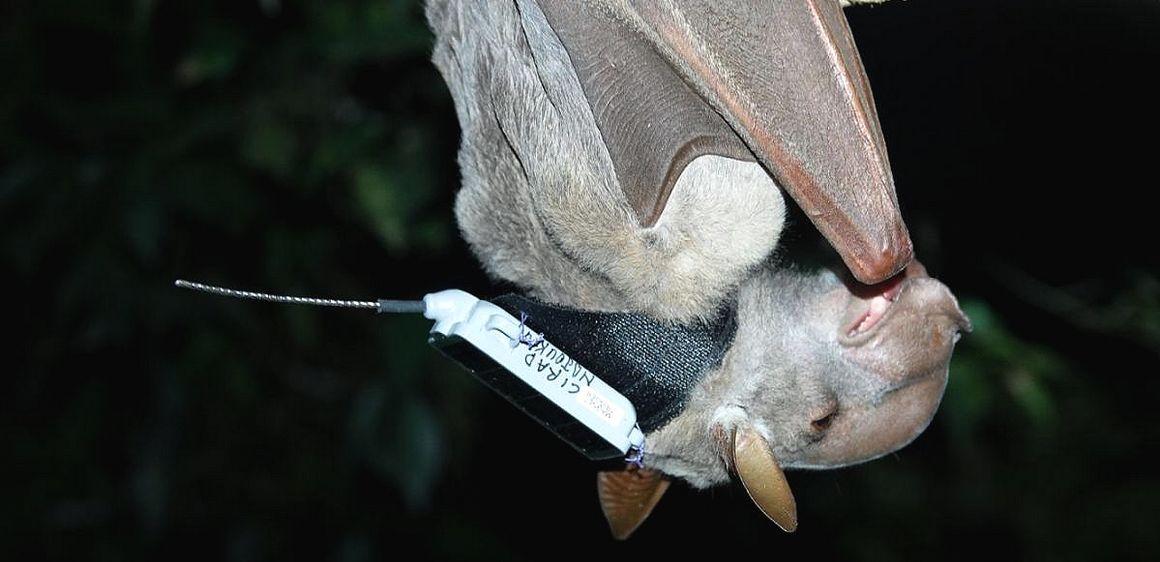- Home
- Worldwide
- CIRAD worldwide
- Projects
- EBO-SURSY project
Ebola virus disease capacity building and surveillance - EBO-SURSY

Hypsignathus monstrosus bat fitted with a GPS tag, to study the behaviour of the species © M. Labadie
Issues
Recent Ebola virus disease (EVD) epidemics in West and Central Africa have highlighted the health risks linked to emerging zoonotic diseases and the inadequate means of detection, prevention, and reaction in the event of emergence or epidemics. It is thus vital to strengthen public and animal health systems. The aim is also to understand the mechanisms by which such diseases emerge, and to make societies less vulnerable to the threat of infectious disease pandemics.
Description
By taking a "One Health" approach to detect, prevent, control and counter the health risks linked to haemorrhagic fevers, the project aims to strengthen early detection systems in West and central Africa. It is promoting a coordinated response in the event of the emergence or re-emergence of zoonotic pathogens.
CIRAD is working to:
- identify the wildlife species that play a role in virus circulation, and collect samples,
- study the mechanisms of contact between species and the migration patterns of likely Ebola virus reservoir species,
- understand the mechanisms by which EVD emerges, and set up participatory epidemic surveillance and early detection systems.
These activities mean training local staff from different research organizations through research, since they will form the heart of future Ebola cluster surveillance and management systems. Combined with short training courses and with awareness raising, these activities will enable a long-term investment in the fight against haemorrhagic fevers and other emerging zoonotic diseases.
Expected impacts
The ten beneficiary countries will have improved control of five major zoonoses: Ebola, Marburg, Rift Valley, Crimean-Congo and Lassa haemorrhagic fevers.
























